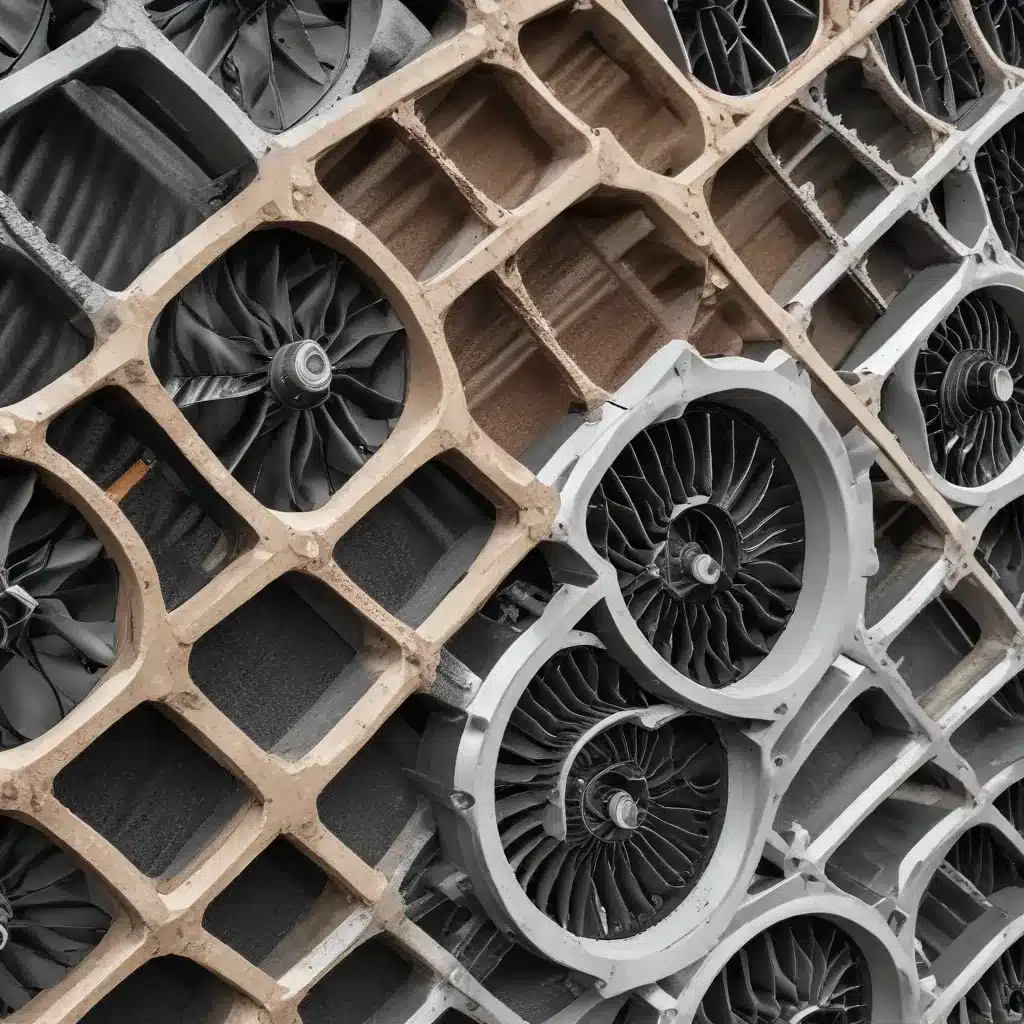
The Challenges of Fouling and Scaling in Air-Cooled Heat Exchangers
Air-cooled heat exchangers play a critical role in a wide range of industrial applications, from power generation and petrochemical processing to HVAC systems and refrigeration. However, these workhorses of industrial thermal management face a persistent challenge – the accumulation of unwanted deposits on their surfaces, a phenomenon known as fouling and scaling. This buildup of materials such as minerals, salts, biological matter, and corrosion products can severely degrade the heat transfer performance of air-cooled heat exchangers over time, leading to reduced efficiency, increased pressure drop, and even equipment failure.
Addressing this problem is no easy feat. Despite extensive research and development, the prediction and prevention of fouling and scaling remain elusive challenges in the field of process engineering. The economic losses and environmental damage caused by these issues are substantial, making the development of effective solutions a top priority for industrial operators and thermal system designers.
Biomimetic Strategies for Improving Air-Cooled Heat Exchanger Resilience
Conventional approaches to mitigating fouling and scaling, such as chemical treatment, mechanical cleaning, and heat exchanger redesign, have had limited success. In recent years, a promising new avenue has emerged – the field of biomimetics, or the emulation of nature’s solutions to engineering challenges. By studying the intricate surface structures and functional behaviors of organisms that thrive in harsh, fouling-prone environments, researchers have uncovered innovative biomimetic strategies that hold the potential to dramatically improve the resilience of air-cooled heat exchangers.
Fractal-Inspired Surface Structures for Enhanced Heat Transfer
One prominent example of biomimetic inspiration is the fractal-like branching patterns observed in natural systems, such as tree trunks, leaf veins, and even human blood vessel networks. These intricate, self-similar structures have been shown to enhance heat transfer performance by optimizing fluid flow and promoting efficient heat distribution.
Researchers have developed fractal-tree-like microchannel heat sinks that mimic the branching patterns found in nature. These designs have demonstrated significant improvements in thermal management compared to traditional parallel microchannel arrangements, thanks to their ability to evenly distribute fluid flow and disrupt boundary layer formation. By adjusting the branch angles, channel aspect ratios, and layer configurations, engineers can fine-tune the heat transfer performance of these biomimetic heat exchangers to suit a wide range of application-specific requirements.
Superhydrophobic and Hybrid Wetting Surfaces for Condensation Management
Another biomimetic approach focuses on the remarkable water-repellent and self-cleaning properties observed in nature, such as those found on the surfaces of lotus leaves and cicada wings. These surfaces feature hierarchical micro- and nano-scale structures that create a superhydrophobic effect, allowing water droplets to easily slide off and carry away contaminants.
Researchers have leveraged these natural principles to develop biomimetic surface coatings for air-cooled heat exchangers, enhancing their resilience to condensation-driven fouling. By incorporating superhydrophobic or hybrid wetting (hydrophilic-hydrophobic) features, these coatings can promote efficient dropwise condensation, minimize the formation of continuous condensate films, and facilitate the self-removal of contaminants. This approach has demonstrated significant improvements in heat transfer performance and reduced susceptibility to fouling under real-world operating conditions.
Drag-Reducing Biomimetic Structures for Enhanced Airflow
In addition to improved heat transfer, biomimetic surface structures can also play a role in reducing the flow resistance experienced by air-cooled heat exchangers. Inspired by the hydrodynamic adaptations of organisms like sharks and fish, researchers have developed biomimetic surface patterns that can disrupt the formation of turbulent boundary layers and reduce viscous drag.
Studies have shown that surface textures mimicking the grooved, scaly, or concave-convex structures found in nature can effectively lower the flow resistance of air-cooled heat exchangers, leading to reduced fan power consumption and improved overall system efficiency. By optimizing the design of these biomimetic structures, engineers can strike a balance between enhanced heat transfer and minimized pressure drop, further boosting the performance and resilience of air-cooled heat exchangers.
Challenges and Considerations in Developing Biomimetic Coatings
While the promise of biomimetic solutions for air-cooled heat exchangers is clear, the practical implementation of these innovative surface coatings is not without its challenges. Achieving the desired micro- and nano-scale surface features with consistent quality and durability requires specialized manufacturing techniques, such as photolithography, nanoimprinting, femtosecond laser processing, and 3D printing.
These advanced micro-nano fabrication methods enable the precise replication of intricate biological structures, but they also introduce additional complexities in terms of cost, scalability, and integration with existing heat exchanger designs. Careful optimization of the manufacturing process and materials selection is crucial to ensure the long-term performance and reliability of biomimetic surface coatings in real-world industrial settings.
Furthermore, the synergistic effects of combining multiple biomimetic features, such as fractal-inspired flow channels, superhydrophobic surfaces, and drag-reducing patterns, present an exciting frontier for future research and development. By leveraging the complementary benefits of these bioinspired strategies, engineers can unlock even greater improvements in the thermal management and fouling resistance of air-cooled heat exchangers.
Conclusion: A Biomimetic Future for Air-Cooled Heat Exchanger Design
As the demand for efficient and sustainable thermal management solutions continues to grow, the adoption of biomimetic principles in the design and engineering of air-cooled heat exchangers holds immense promise. By learning from the remarkable adaptations and functional behaviors found in nature, researchers and engineers can develop innovative surface coatings and structure designs that dramatically enhance the resilience of these critical industrial components against the persistent challenges of fouling and scaling.
Through the integration of fractal-inspired flow paths, superhydrophobic and hybrid wetting features, and drag-reducing surface textures, air-cooled heat exchangers can be transformed into robust, high-performance systems capable of withstanding the harsh operating conditions that often plague traditional designs. As the field of biomimetics continues to advance, the potential for even more transformative breakthroughs in air-cooled heat exchanger technology remains an exciting prospect for the future.
To learn more about the latest developments and applications of biomimetic surface coatings for air-cooled heat exchangers, be sure to visit https://www.aircooledheatexchangers.net/, where our team of experts is dedicated to staying at the forefront of this rapidly evolving field.

